Join our WhatsApp Channel for free information about snakes & snakebite as well as notifications of our latest specials!
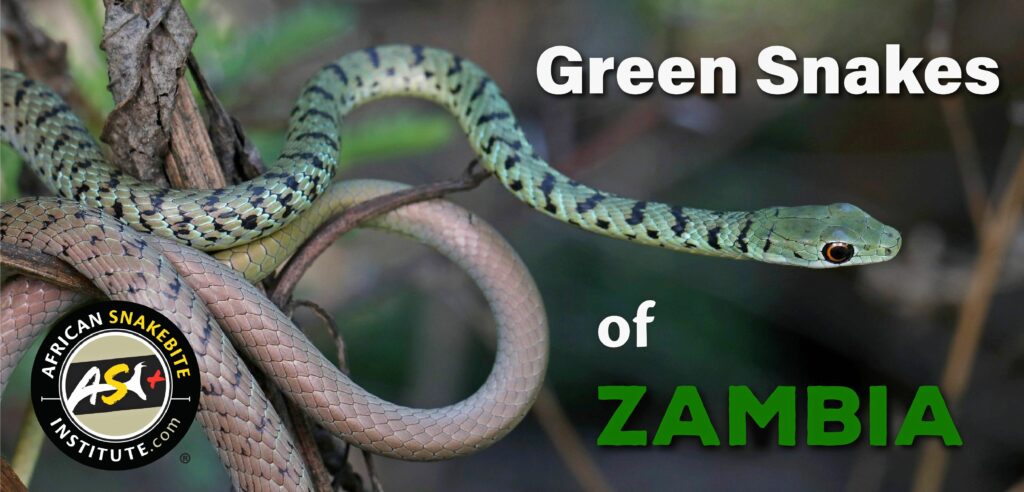
Zambia is a large country with a variety of habitats, notably Congolese influence from the north and the Zambezi basin in the south. There are just over 100 species of snakes recorded for the country. Herpetological work in the country is limited with some work by the late Donald Broadley and more recently by Dr Pietersen and a few others. Distributional records are slowly increasing with work by some enthusiasts and the last 10 years has seen an incredible number of records uploaded to virtual museum databases.
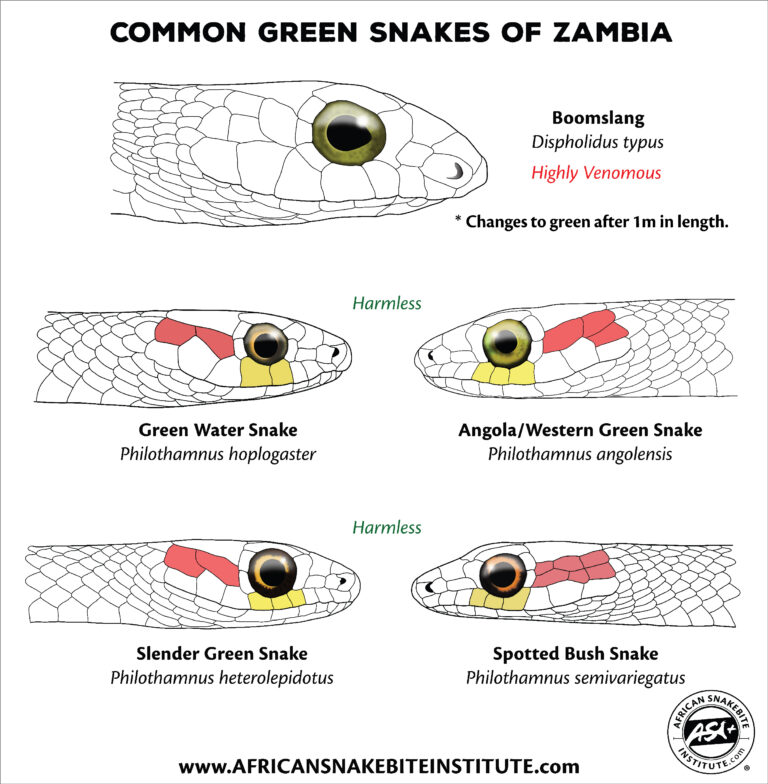
Green snakes of Zambia highlighting scale differences between the easily confused species.
Of the 100 odd species of snakes recorded for the country, there are seven green snakes that occur in the region and this can make identification tricky. There are no Green Mambas (Dendroaspis angusticeps) in the country as they prefer more tropical climates in Malawi and eastwards to the coast. There are old anecdotal records of Jameson’s Mamba (Dendroaspis jamesonii) in the extreme north-eastern corner of the country. These records need to be verified.
Of the seven green snakes in the country, two are very seldom seen. The Thirteen-scaled Green Snake (Philothamnus carinatus) has only recently been noted in the country from three records on the border of the Congo. The Ornate Green Snake (Philothamnus ornatus) has a distinct brown stripe down the centre of the back and is not easily confused with the other species. The juvenile form of the Jackson’s Tree Snake (Thrasops jacksonii) may also be green to blue in colour before maturing to pitch black. These snakes have keeled scales and a rough appearance and are not easily confused with the harmless green snakes. It occurs along the border of the Congo around Solwezi to Mwinilunga.
This article will look at the five commonly seen and confused green snakes of Zambia.
A chart is shown above that highlights the scale difference between these species.
Boomslang (Dispholidus typus)
A common and large green snake growing to around two meters in length. The Boomslang is highly venomous, but they are very shy and seldom bite people. Juvenile Boomslang are mottled grey with a dark band down the neck, a brown head, white chin and bright green eyes. As they mature, they will change to green in males (generally) and brown or grey in females. This colour change usually occurs as the snake exceeds one meter in length. Small Boomslang are never green. The head is short and rounded in a Boomslang with a large eye and the scales across the body are keeled, giving it a rough appearance.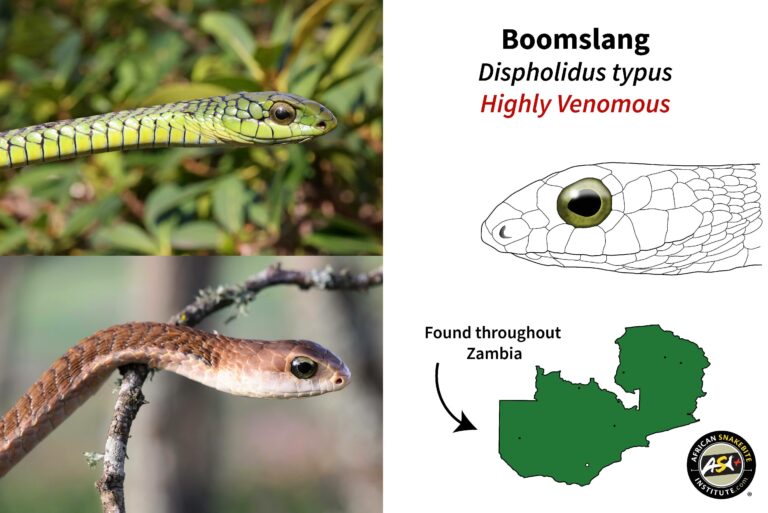
Angola/Western Green Snake (Philothamnus angolensis)
A common and widespread green snake growing to around 80 cm in length. This snake has a robust build and angular head. The eye is olive green to yellow, with black infusions. The lower jaw is usually white or pale. The body is emerald-green with black skin between the scales and often white or light blue speckles between the scales. When this snake is agitated, it may inflate the neck, exposing the black skin and pale speckles. The underside is green to yellowish. This snake is non-venomous but may be quick to bite.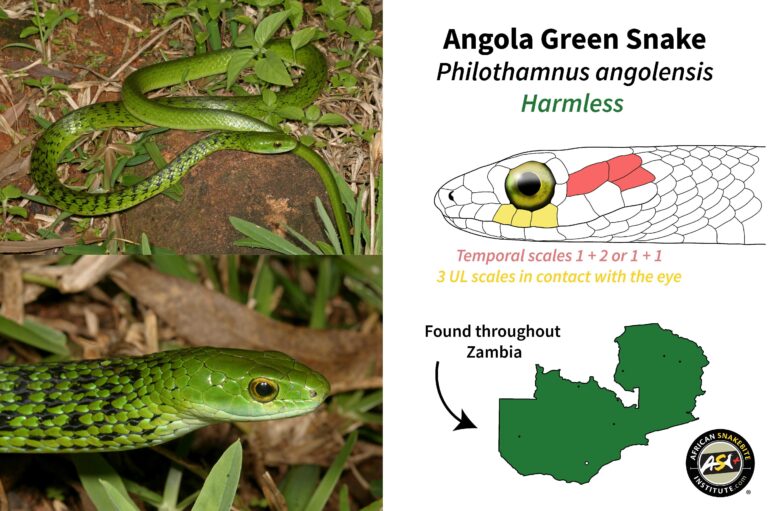
Green Water Snake/South-eastern Green Snake (Philthamnus hoplogaster)
A common and widespread green snake growing to around 68 cm in length. It is a slender snake with a short snout. The eye is dark with some yellow around the pupil. The lower jaw is usually pale and the snout is often yellow in colour. The body is bright green with a velvety appearance. The underside is cream to white. This snake is non-venomous and seldom attempts to bite.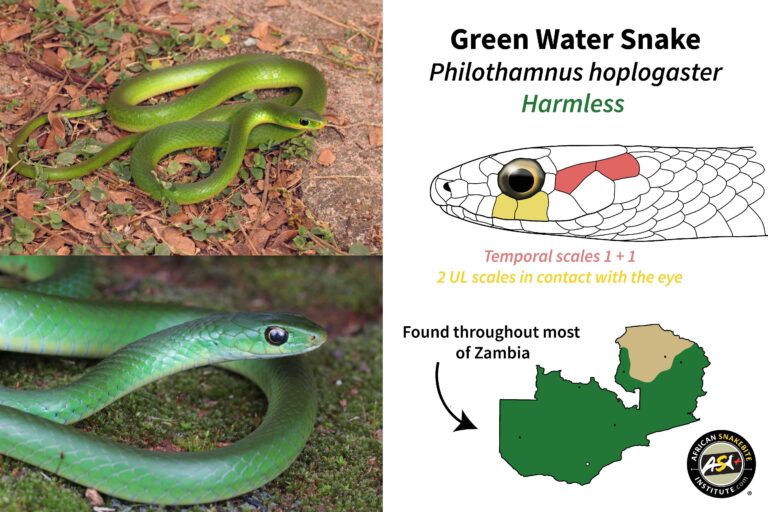
Slender Green Snake (Philothamnus heterolepidotus)
A lesser-seen green snake that is largely present in the north and west of Zambia. As the name suggests, this is an elongate and slender snake with a short, angular head. It reaches a maximum length of around 50 cm. Colour is uniform green, usually with yellow lower sides. The eye is dark with some yellow around the pupil. The underside is yellow to light green. This snake is non-venomous and seldom attempts to bite.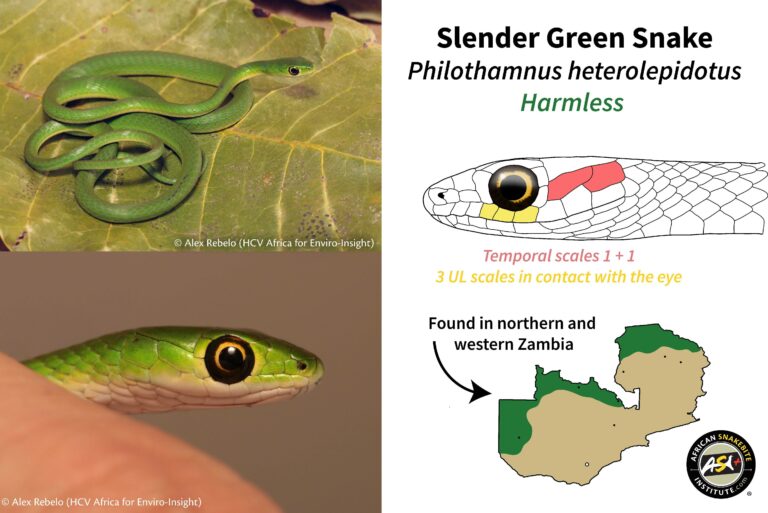
Spotted Bush Snake (Philothamnus semivariegatus)
The most commonly encountered green snake in Zambia. A long and slender species reaching around 85 cm in Zambia. The eye colour is dark with bright orange or red to yellow around the pupil. There are two colour forms found in Zambia, the standard form is bright green to turquoise on the foreparts of the body, fading to olive or coppery-brown on the tail. The neck has black speckles which often fuse to form thin black stripes or variegated patterns. The second colour form is plain green, often becoming slightly olive on the head. There are no dark spots or speckles on the neck, but often light blue or white speckles on the edges of the scales. These pale speckles are exposed if the snake inflates the neck. There is also black skin between the scales which may be exposed when the neck is inflated. This snake is more slender than the Angola Green Snake, which it is often confused with, and has thin yellow border around the pupil in the eye. This snake is non-venomous but may be quick to bite if handled.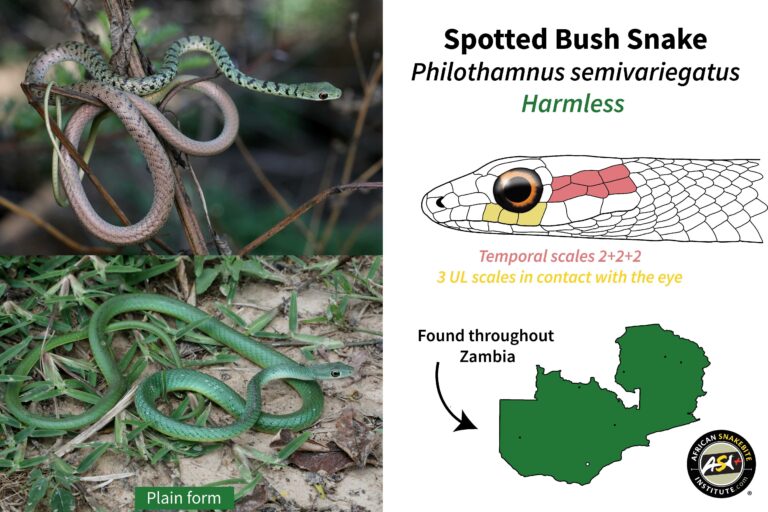
The general rule is small green snakes under one meter in Zambia are harmless snakes and large green snakes over one meter are likely the highly venomous Boomslang. There are no Green Mambas in Zambia – despite what locals may believe!
CONTACT US:
Product enquiries:
Caylen White
+27 60 957 2713
info@asiorg.co.za
Public Courses and Corporate training:
Michelle Pretorius
+27 64 704 7229
courses@asiorg.co.za
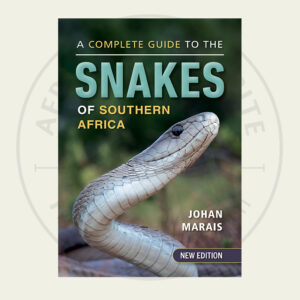 A Complete Guide to the Snakes of Southern Africa - 2022 Edition
R520.00
A Complete Guide to the Snakes of Southern Africa - 2022 Edition
R520.00
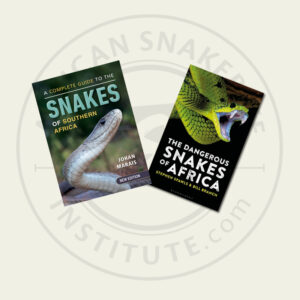 ASI Book Combo 1
ASI Book Combo 1
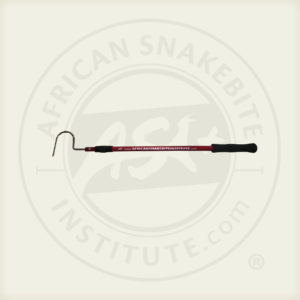 ASI Collapsible Snake Hook - 1.2 m
R650.00
ASI Collapsible Snake Hook - 1.2 m
R650.00

Join our WhatsApp Channel for free information about snakes & snakebite as well as notifications of our latest specials!
Want to attend the course but can’t make it on this date?
Fill in your details below and we’ll notify you when we next present a course in this area:
Want to attend the course but can’t make it on this date?
Fill in your details below and we’ll notify you when we next present a course in this area:
Want to attend the course but can’t make it on this date?
Fill in your details below and we’ll notify you when we next present a course in this area:
Want to attend the course but can’t make it on this date?
Fill in your details below and we’ll notify you when we next present a course in this area:
Want to attend the course but can’t make it on this date?
Fill in your details below and we’ll notify you when we next present a course in this area:
Want to attend the course but can’t make it on this date?
Fill in your details below and we’ll notify you when we next present a course in this area:
Want to attend the course but can’t make it on this date?
Fill in your details below and we’ll notify you when we next present a course in this area:
Want to attend the course but can’t make it on this date?
Fill in your details below and we’ll notify you when we next present a course in this area:
Want to attend the course but can’t make it on this date?
Fill in your details below and we’ll notify you when we next present a course in this area:
Before you download this resource, please enter your details:
Before you download this resource, would you like to join our email newsletter list?